The amazing science behind the Nokia 808′s mammoth 41MP camera sensor explained
in terms of mobile imaging, the Nokia 808 is a revolutionary device. Not only is it capable of taking images of up to 38MP, but it can also make use of a technology called oversampling, which means that out of 7 adjacent pixels of information it captures, it outputs to memory a single resulting pixel, which hopefully, is picture perfect.

There are three outright advantages to this oversampling thing: amazing image quality, lossless zoom, and superior low light performance.
Maximum resolution matters
The Nokia 808 can capture 4:3 images at up to 38MP and 16:9 images at up to 34MP thanks to the multi-aspect sensor. The difference in aspects also means a difference in the effective viewing angle, which in 35mm equivalent is about 28mm in 4:3 aspect capturing and 26mm in 16:9 aspect capturing.
At 1/1.2″, the sensor size is impressive even for a point’n'shoot camera, and is more than double the one found on the N8. And if you gotta know, that means an estimated pixel size of 1.26 microns for each pixel, which is about the same size modern-day 8 megapixel cameraphones use. It’s only that there are 5 times more pixels on this baby, hence the size.
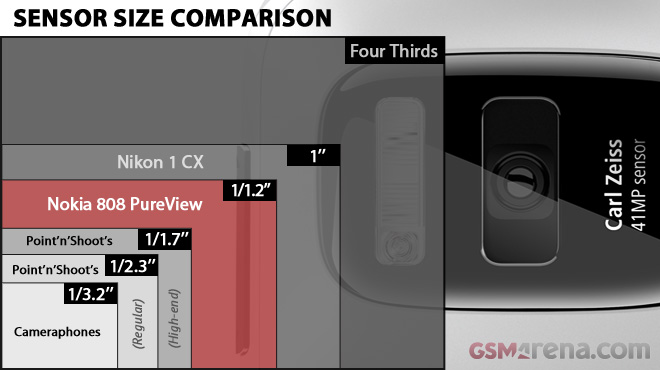
Yes, the 41MP sensor of the Nokia 808 is really something, but you won’t be actually able to take 41MP photos. Here you can see all the different image aspects and their respective resolution. The sensor has a total active surface of 7728 x 5368 pixels, which does amount to 41MP, but depending on the aspect ratio you choose, it will use either 7728 x 4354 pixels for 16:9 images or 7152 x 5368 pixels for 4:3 images/videos.
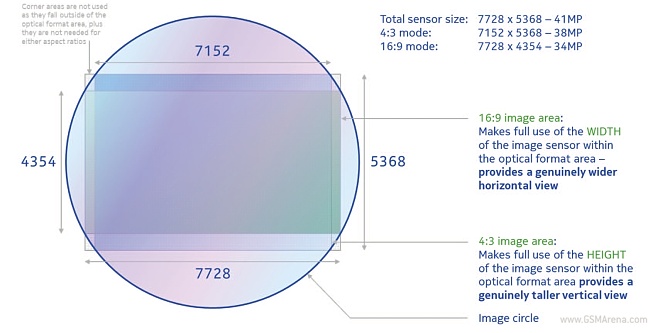
Actually, the default shooting resolution in PureView mode (the pixel oversampling one) is 5MP in 16:9 aspect ratio, but you also have options for 2MP and 8MP. You can turn off PureView mode and shoot in the camera’s maximum resolution, in which case you will turn up with quite large image files as evident from our gallery with full-res samples.
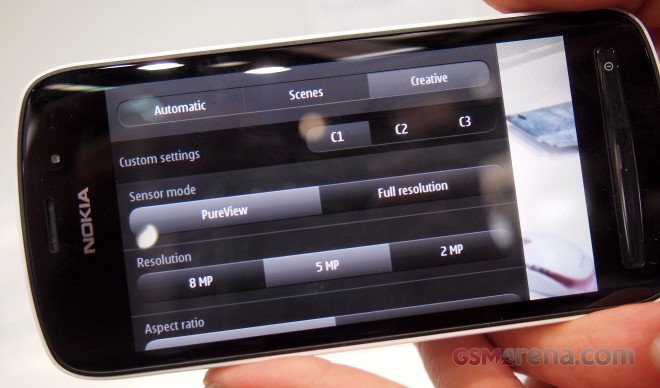
Pixel oversampling is like miniaturization but prettier
But enough about maximum resolution, let’s get back to image quality. The Nokia Team have given a lot of thought to how to improve the image quality on size-constrained mobiles. With ever decreasing pixel sizes, the challenge for engineers is quite clearly to overcome the negative effects like high digital noise levels and the resulting poor low light performance. Enter pixel oversampling.
Oversampling is different from mere cropping as it doesn’t simply use part of the sensor to produce a lower resolution image. Instead, it still uses the full sensor, but downsizes the resulting image to say, 5MP on the Nokia 808. The benefit of this is that this process of downsizing removes digital noise, while preserving the same level of detail you might get by shooting with the best 5 megapixel camera.
But there’s more to having such a huge sensor.
And it goes all zoom-zoom
Since the Nokia 808 captures so many pixels and is able to produce lower res photos, it’s only natural that it tries to tackle one of the other most wanted features in cameraphones – the lossless zoom. Instead of focusing on the traditional ways of delivering image zooming such as digital interpolation or optical magnification, the Nokia team went for the highest resolution sensor ever found on a mobile.
Everybody has tried regular digital zoom, it’s no good. Some have even attempted optical zooming, but it’s way too bulky, noisy and even slow and prone to geometrical distortion. The only viable solution was the 2x digital zoom that was offered by the N8 in video mode (via pixel binning) but even that involved interpolation of sorts. But to be able to offer any zoom levels in still images, you need to have a solid sensor with a huge amount of extra pixels compared to the nominal output resolution. And lots of processing power.
To meet the immense processing requirements (over 1 billion pixels per second and 16x oversampling), the Nokia team developed a special companion processor to the sensor that handles pixel scaling before sending the required number to the main image processor.
Once that’s out of the way, you get lossless zooming with the same effective viewing angle – in 35mm equivalents, it’s 28mm in 4:3 aspect ratio and 26mm in 16:9. And depending on the resolution, you get a variety of zoom levels. In 5MP stills, for instance, you get around a 3x zoom.
I’ll let the Nokia team deliver their explanation of this new zoom method, they simply nail it in rather simple words:
With the Nokia 808 PureView, zoom is handled completely differently — like nothing that has been done before. We’ve taken the radical decision not to use any upscaling whatsoever. There isn’t even a setting for it.When you zoom with the Nokia 808 PureView, in effect you are just selecting the relevant area of the sensor. So with no zoom, the full area of the sensor corresponding to the aspect ratio is used. The limit of the zoom (regardless of the resolution setting for stills or video) is reached when the selected output
resolution becomes the same as the input resolution.For example, with the default setting of 5MP (3072 x 1728), once the area of the sensor reaches 3072 x 1728, you’ve hit the zoom limit. This means the zoom is always true to the image you want.The level of pixel oversampling is highest when you’re not using the zoom. It gradually decreases until you hit maximum zoom, where there is no oversampling.
Here’s an example of the amazing level of detail the Nokia 808 allows with its high-res shots.
In video, at FullHD 1080p resolution you get 4x lossless zoom, at 720p HD video you’ve got 6x lossless zoom, and for nHD (640×360) video there’s the impressive 12x zoom. And you can bet video quality will be great, since the 808 encodes the video in up to 25Mbps worth of bitrate.
The Nokia 808 camera has some other impressive specs too
Even without these amazing features, unseen before in a mobile phone, the Nokia 808 has some serious imaging potential. You’ve got a Carl Zeiss certified lens, the xenon flash, a relatively large F2.4 aperture, and a Neutral Density filter for those high-intensity lighting scenes.
The added mechanical shutter minimizes the disadvantages of a rolling shutter such as the vertical stripes that appear in the highlights of high-contrast images also known as smear, as well as the wavy “Jell-O” distortion that sometimes appears if you move the camera while shooting.
Also, the large sensor size and the longer focal range of 8.02mm in combination with the large aperture delivers more blurry background (a nice bokeh) in closeup shots as opposed to most regular cameraphones, which is exciting on its own.
Wrapping it up
As Nokia puts it, the Nokia 808 presents a “quantum leap forward in cameraphone performance”. Indeed, it introduces concepts we’ve never thought possible on a mobile phone. It’s not about the piles of megapixels but rather what you can do with them, such as producing picture perfect low-res images or lossless zooming in both stills and videos (including after-the-fact zooming and cropping). It’s one helluva camera and we bet it will be able to challenge most point-and-shoots on their own turf. Too bad they’ve picked Nokia Belle as the OS of choice. But we remain positive, as today Nokia representatives promised on stage at the MWC 2012 that this technology will get implemented in future products as well.


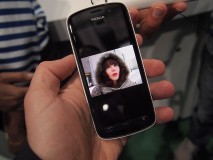

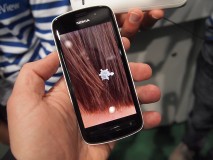
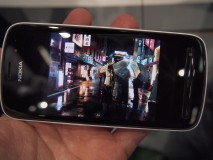
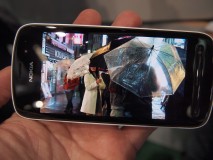
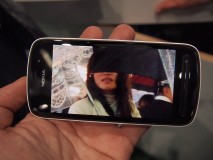
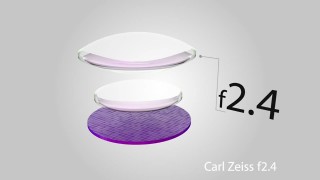
No comments:
Post a Comment